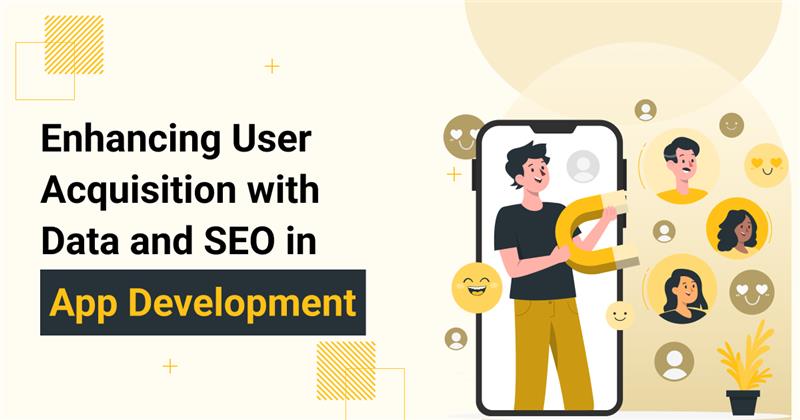Mastering Content Marketing Strategy for Your App: Best Practices to Follow
It is no rocket science – any new app coming out these days already has hundreds, if not thousands, of other alternatives. If you have ever been to an open-air market with tons of traders yelling and trying to sell you something, then you already know what it’s like to have people fighting for your attention. And you know what’s interesting? You probably simply ignored most of those sellers.
This is exactly how users feel when they skip your paid ads. And there is nothing you can really do about it unless you create a working content marketing strategy. Only this way you can make your app special and not worry about your competition (or at least not that much). But there are so many tips out there, so where do you even start? This guide explores exactly how to do it and get it right the first time.
Why Use Content Marketing for Mobile Apps?
It might sound corny, but using content marketing (paired with SEO) is probably the best way to get your new app noticed. Apart from the fact that it can finally make people see your brand, it is actually far cheaper than relying on PPC alone. Yet, the best part is that the more you work on search engine optimization, the more traffic you will generate, attracting even more potential users. That sounds good, but how exactly does all this work?
Well, over 68% of all online experiences start with a search engine, and it’s no surprise that Google dominates this niche. So, if you follow Google’s best practices and create SEO-friendly content, sooner or later, it will appear on the first page of search results. And that is the place that has tons of traffic (aka leads) just lying around.
How can you increase your chances? Get others to link to you. Having quality and relevant websites linking to you is a sign to Google that you are the real deal. The only issue is that when it comes to search engine optimization, much depends on a niche. The more popular it is – the harder it is to get through the crowd. Often, it’s a bit harder for technology blogs to get quality IT-related links. But it isn’t impossible, and we’ll prove it below.
How to Use Content Marketing to Promote Your Apps: 5 Best Practices
Say you made a new app, but how do you get people to use it? The obvious choice is to spread the word about it. But what is the right way to do content marketing for mobile apps? Where do you start?
1. Use Keyword Research to Make Your Content Useful
If you have your app up and running, you already know how to do market research, but it’s also important to remember about keyword research. This lets you figure out exactly what your target audience searches for online. Naturally, you will see the words users use to find apps that have the functionality you offer. For example, if you are creating a photo editor app, you can type the phrase “photo editor app” into a keyword explorer SEO tool, and you will get something like this:

From this, you can tell:
- The types of topics they want to read (e.g., “X Best Free Photo Editor Apps for Android” would be a decent hit)
- What features they like most in apps like yours (hint: some free features)
But keyword research can also help you discover the things users don’t like at all and even what issues most people struggle the most with. The end result of your keyword research is that you better understand how to craft content that aligns with what potential users need. You will be able to speak to them in their own “language” and demonstrate clearly how your app helps solve their pain points.
Keep in mind that the keywords will also be a necessary part of your app marketing strategy. So, don’t just use them for your blog content but also for social media posts, app store content optimization, website landing pages, and pretty much any other content piece you share.
2. Diversify Your Platforms to Get More App Installs
Some developers who are just starting out tend to limit themselves to just posting on the app stores and their social media accounts. But marketing is all about being omnichannel these days. The end goal is to reach as many potential users as possible. Since different people will respond to different types of content, and all of them won’t hang out in the same places online, you will need to cast a wider net.

For most, the biggest move is creating a website – sometimes using popular CMS after they compare the features to find the best one for them. But then many of them just create the landing pages and leave it at that. But blogging is even better, and at this stage, you already have some ideas for engaging topics (after doing your keyword research).
But as our idea is to increase content distribution points, don’t focus only on your articles and guides. Instead, try podcasts, YouTube shorts, X (formerly Twitter), Instagram Reels, and basically any other format your users might enjoy. You want different forms of interactive and engaging content.
Take WhatsApp as an example. Apart from updating their blog, they are also active on YouTube:

And X:

Notice how keywords like “video calls,” “group chat,” “WhatsApp,” and “audio” are woven naturally into the content throughout all their platforms.
Besides, another thing to keep in mind is how you can diversify your content to draw in users at different points of the sales funnel. To do so, publish a fixed percentage of pieces targeted at every stage of the funnel.
3 Strategically Optimize Your Content Everywhere
Your website should really be a big part of your mobile app marketing since it’s also the first point of contact for most potential users. Luckily, optimizing it for more visibility isn’t that difficult if you have a clear strategy. Start by adding your keywords to every content piece, of course.

Notice how the keyword “AI Edit” appears in a couple of places, including the title, image, and content body? You want to do the same. Distribute the keywords you pick naturally throughout your text. Plus, add one to your title, meta title, meta description, and URL. But when it comes to H2 and H3 headings, don’t include keywords in each of them – this doesn’t seem natural.
Throw in a couple of high-quality images that show off the best features of your app (if applicable), and add alt text with keywords. Do the same for your in-app content to improve your mobile content strategy. The Evernote app description is a good example.

Make sure your paragraphs are short and simple. Use more bullet points and numbered lists to make your text skimmable. You can see this trick used by almost all major apps on the app store. Here is an example from Canva.

But know when to stop – you don’t want to overuse keywords. It’s true that sometimes people forget to optimize their copy. But there are also businesses that go to the other extreme and throw in tons of keywords in every sentence. Well, that’s a bad practice known as keyword stuffing. And it only works to get on the wrong side of Google search engines. Instead, use different keywords every 150 words or more.
4. Add Link Building to Your Content Marketing Strategy
Over 96% of websites don’t get any traffic from Google. Imagine – no traffic whatsoever. One of the reasons is that their content doesn’t match their target audience’s search intent. But a bigger issue is that they don’t have any backlinks.
If you want to rank in search engines and get real traffic and app downloads from your SEO, then your content strategy must include a solid plan to build quality backlinks. How can you do that? There are many ways to build links, but one of the best practices is guest posting. Exploring professional link building strategies to boost search engine rankings can also help you uncover more effective ways to create high-quality backlinks that drive sustainable results. For example, Notion’s home page alone has over 49 million backlinks pointing to it.
Sure, guest posting isn’t a strategy that yields fast results, but it is extremely effective in the long run. The result is that it now has a high domain rating, which makes it look trustworthy to search engines. This means an even better search ranking. Since link building doesn’t come naturally for many people (even some specialists), you always have the option to outsource this process. But be careful because some links can be toxic and unsafe. A look at Cybersecurity News will show you how bad links can quickly turn into a security nightmare. So, always make sure your link sources can be trusted, whether you are delegating or doing them yourself.

The result is that it now has a high domain rating, which makes it look trustworthy to search engines. This means an even better search ranking.

Since link building doesn’t come naturally for many people (even some specialists), you always have the option to outsource this process. But be careful because some links can be toxic and unsafe. A look at Cybersecurity News will show you how bad links can quickly turn into a security nightmare. So, always make sure your link sources can be trusted, whether you are delegating or doing them yourself.
5. Collaborate With Others to Promote Your App
You can have hundreds of ideas on how to improve your content strategy, but there is one you can’t discard (no matter how complicated it seems) – collabs. Many think it isn’t for them because it is way too expensive. But in reality, it doesn’t have to be like that. Of course, if you have budgets to splurge, go for it. Yet, if it isn’t your story, you can still find a way. How?
Instead of big stars and influencers, choose micro-bloggers in your niche. While big celebrities can take hundreds of thousands or even millions of dollars for one integration, working with micro-influencers to promote your app is much more affordable. And on top of that, their audience is very targeted.
Another way to go about this is to work with your own users. Ha? Whether you’ve tried it or not, user-generated content (UGC) is a big thing, and for a reason. First of all, it sort of simplifies your content distribution if you plan well. Plus, you make people more involved with your brand, which creates a sense of connection. After creating content with you, they won’t confuse your app with any other.
Conclusion
Creating an effective content marketing strategy for apps might seem like a high mountain to climb. And honestly, it is. It won’t be a weekend trip but rather a long journey. Yet, only you choose whether to make it a memorable adventure or an energy-draining, never-ending road. No matter what, remember that your main goal shouldn’t be downloads and traffic from random people. The whole idea of content marketing is to attract the right users who are genuinely interested in what you have to offer.




